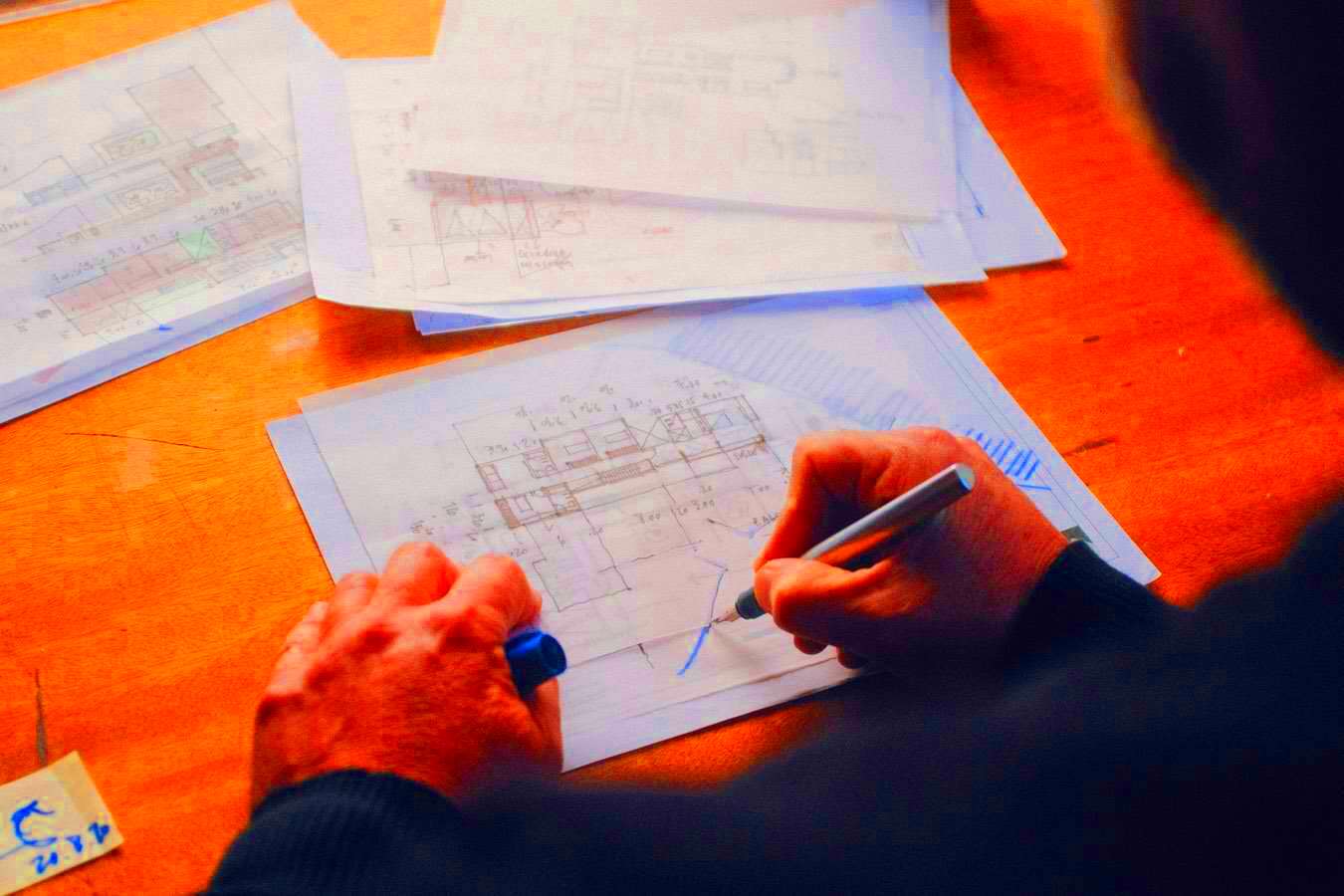Becoming a freelance architect is an exciting career path for those who want flexibility, independence, and the chance to work on diverse projects. Unlike traditional architectural jobs, freelancing allows you to be your own boss, choose your clients, and set your own rates. However, it's not without its challenges. As a freelance architect, you'll need to juggle various tasks from designing buildings to managing client relationships. In this guide, we’ll explore what it takes to succeed as a freelance architect and how to start your own practice.
Understanding the Role of a Freelance Architect

Freelance architects work independently rather than being employed by a firm or company. They are responsible for the entire process of architectural design, which includes everything from initial concept development to overseeing construction. The role requires both creativity and technical knowledge to ensure the designs are functional, aesthetic, and safe.
As a freelance architect, you will:
- Meet with clients to understand their needs and preferences
- Create architectural designs and plans using software like AutoCAD and Revit
- Coordinate with other professionals such as engineers and contractors
- Ensure compliance with local building codes and regulations
- Manage budgets and timelines for your projects
Working freelance means managing all aspects of your business, from marketing and client acquisition to handling contracts and billing. It can be rewarding but requires strong organization and multitasking skills.
Also Read This: How to Sell Services on Fiverr
Skills and Qualifications Needed for Freelance Architecture

To become a successful freelance architect, a combination of education, technical skills, and soft skills is required. First and foremost, you need to be a licensed architect, which involves completing a degree in architecture and passing required exams in your country or region. Beyond the technical aspects, there are several other skills that will help you thrive in the freelance world.
Education and Licensing
Most freelance architects have a degree in architecture, which typically takes five to seven years to complete. After graduation, you will need to pass licensing exams that vary by country or state. This certification ensures you have the knowledge and skills to design safe and functional structures.
Technical Skills
As a freelance architect, you must be proficient in architectural design software, such as:
- AutoCAD
- Revit
- SketchUp
- 3D modeling software
You’ll also need to be knowledgeable about building codes, zoning laws, and environmental regulations to ensure your designs meet legal standards.
Soft Skills
In addition to technical expertise, the following soft skills are essential for success:
- Communication: Being able to explain complex ideas clearly to clients, contractors, and other professionals is crucial.
- Project Management: Freelance architects must be able to manage multiple projects at once, keeping them on schedule and within budget.
- Problem-Solving: Clients often have specific needs or constraints, so being able to find creative solutions is a must.
- Business Acumen: As a freelancer, you'll also need skills in marketing, invoicing, and client management.
With the right combination of education, technical expertise, and interpersonal skills, you’ll be well on your way to establishing a successful freelance architecture practice.
Also Read This: How to Create a Portfolio on Fiverr
How to Build a Strong Portfolio as a Freelance Architect
A strong portfolio is one of the most powerful tools for a freelance architect. It showcases your skills, style, and the type of work you can offer potential clients. Your portfolio should reflect the variety of projects you can handle, from residential buildings to commercial spaces. It's your chance to show off your creativity and professionalism, so it's important to make it impressive and comprehensive.
To build a strong portfolio, follow these tips:
- Showcase Your Best Work: Include a selection of your best and most recent projects. Quality over quantity matters. It's better to have a few standout pieces than to fill your portfolio with average work.
- Highlight Different Types of Projects: Display a variety of work to show your versatility. Include residential, commercial, and perhaps even smaller projects like renovations or landscape designs. This will attract a broader range of clients.
- Include Process and Results: Clients want to see how you work. Show sketches, designs, and finished projects. You can also include before-and-after photos or explain your design process for each project.
- Keep It Simple and Professional: A clean, well-organized portfolio is more effective than a cluttered one. Make sure the layout is easy to navigate and the images are high quality.
- Digital Portfolio: In today's digital world, having an online portfolio is a must. Create a professional website or use platforms like Behance or LinkedIn to share your work.
Remember, your portfolio is a reflection of your skill and professionalism, so make it count. Keep updating it as you complete more projects to maintain its relevance and show your growth as an architect.
Also Read This: Difference Between Fiverr and Fiverr Pro
Finding Clients and Building a Network
Finding clients and building a solid network is crucial for any freelance architect. Without clients, you won't have projects to work on, and without a network, you may struggle to find those clients. The key to success in freelancing is fostering relationships with other professionals and tapping into various platforms that connect architects with potential clients.
Here are some tips for finding clients and building a network:
- Leverage Social Media: Platforms like Instagram, Pinterest, and LinkedIn are great for showcasing your work and connecting with potential clients. Post regularly and engage with your audience to stay visible.
- Join Architecture Groups and Forums: Online groups, both on social media and professional platforms, are excellent places to network. Participating in discussions can help build your credibility and lead to job opportunities.
- Partner with Contractors and Builders: Establish relationships with contractors, builders, and engineers. They often need architects for their projects and can refer you to clients or hire you directly.
- Attend Industry Events: Conferences, seminars, and workshops are great for networking. Not only will you learn about new trends, but you’ll also meet potential collaborators and clients.
- Ask for Referrals: Don’t hesitate to ask satisfied clients for referrals. Word-of-mouth is a powerful tool in gaining new business.
- Build Your Reputation: Deliver quality work on time and provide excellent customer service. A good reputation will lead to repeat clients and more referrals.
Finding clients and building a network doesn’t happen overnight. It requires patience, consistency, and making meaningful connections. But once you have a steady network and client base, it can lead to long-term success as a freelance architect.
Also Read This: How to Delete Notifications on Fiverr: A Step-by-Step Guide
Setting Your Freelance Architecture Rates
Setting the right rates as a freelance architect is one of the most important decisions you'll make in your business. Charge too little, and you might struggle to cover your expenses. Charge too much, and potential clients may look elsewhere. The goal is to find a balance that reflects your skill level, experience, and the quality of service you provide.
Here’s how to set your freelance architecture rates:
- Research the Market: Start by researching what other freelance architects in your area are charging. Look at their experience, the types of projects they handle, and their location. This will give you an idea of the going rates.
- Consider Your Experience and Skill Level: Your rates should reflect your experience, education, and the quality of your work. If you’re just starting, you may need to charge a lower rate to attract clients, but as you gain experience, you can increase your rates.
- Project-Based vs. Hourly Rates: Decide whether you want to charge an hourly rate or a flat fee per project. Hourly rates are common for smaller projects, while flat fees are often used for larger, long-term projects. Consider the nature of the work when making this decision.
- Factor in Expenses: Don’t forget to account for your business expenses. These can include software subscriptions, marketing costs, office supplies, and even taxes. Make sure your rates cover these costs and still allow for a reasonable profit.
- Be Transparent: Be clear with clients about your rates from the start. Offer a detailed contract outlining your fees, payment terms, and any additional charges for extra work.
- Be Open to Negotiation: Clients may ask for discounts or try to negotiate your rates. Be prepared to justify your fees, and be open to finding a fair compromise.
Ultimately, your rates should reflect the value you bring to a project while ensuring you are compensated fairly for your time and expertise. Setting rates can be a bit tricky at first, but as you gain more experience, you’ll develop a pricing structure that works best for you and your clients.
Also Read This: Understanding Clicks on Fiverr: A Comprehensive Guide
Managing Projects and Working with Clients
As a freelance architect, managing projects and working with clients efficiently is essential to the success of your business. It’s not just about designing buildings but also about keeping the project on track, within budget, and ensuring clients are satisfied every step of the way. Effective communication and project management skills are crucial in maintaining a smooth workflow and fostering long-term relationships with clients.
Here are some tips for managing your projects and working with clients:
- Clear Communication: From the very beginning, set clear expectations with your clients. Explain your process, timelines, and deliverables. Keep them updated regularly on the progress of their project to avoid misunderstandings.
- Use Project Management Tools: Tools like Trello, Asana, or Basecamp can help you stay organized, track deadlines, and communicate with clients and contractors. These tools keep everyone on the same page and allow for easy access to important project information.
- Set Realistic Timelines: Be realistic about how much time each phase of the project will take. Clients often expect quick turnarounds, but rushing can lead to mistakes. Set deadlines that are achievable and allow time for revisions.
- Budget Management: Keep track of your project’s budget and make sure the client is aware of any changes or additional costs. Always give estimates upfront, but be transparent about potential cost fluctuations due to unforeseen factors.
- Problem Solving: In any project, problems may arise, whether it’s with the design, construction, or client expectations. Approach these challenges proactively by offering solutions and maintaining a calm, professional attitude.
- Documentation: Always document your agreements, contracts, and communications. This will protect both you and your clients in case of any disputes later on.
By maintaining good organization and clear communication, you can ensure smooth project delivery and satisfied clients, which will help you secure future projects and build a good reputation.
Also Read This: Annual Earnings of Freelance Artists
Challenges and Tips for Success in Freelance Architecture
Freelance architecture offers independence and flexibility, but it also comes with unique challenges. Balancing client expectations, tight deadlines, and the demands of running a business can sometimes feel overwhelming. However, with the right mindset and strategies, you can navigate these challenges and find success.
Here are some common challenges and tips for overcoming them:
- Inconsistent Workflow: Freelancing can sometimes mean periods of little to no work followed by a rush of projects. To manage this, try to build a strong client base and secure projects in advance. Always keep networking and looking for new clients.
- Client Expectations: Clients may have unrealistic expectations about timelines, budgets, or design outcomes. Be upfront about what’s possible and set clear, realistic expectations from the start. Regular communication is key to managing expectations throughout the project.
- Time Management: Managing multiple projects at once can be overwhelming. Stay organized by prioritizing tasks and using project management tools. Break down large tasks into smaller, manageable steps to avoid feeling overworked.
- Isolation: Freelance work can feel isolating at times, especially if you’re working from home. To combat this, try to work in shared spaces or attend networking events to stay connected with the architectural community.
- Financial Stability: Freelancers often deal with periods of uncertainty regarding income. To ensure financial stability, set aside a portion of your earnings for savings, especially during busier months, to cover slower periods.
- Marketing Yourself: As a freelance architect, it’s important to continuously market yourself. Keep your portfolio up to date, stay active on social media, and engage with potential clients through online platforms like LinkedIn, Behance, and industry-specific forums.
Despite these challenges, freelance architecture can be a rewarding career. By staying organized, setting clear expectations, and managing your time and finances well, you can overcome obstacles and build a successful freelance architecture business.
Also Read This: How to Write Effective Tags on Fiverr
FAQs
1. Do I need a degree to become a freelance architect?
Yes, to become a licensed architect, you typically need a degree in architecture from an accredited school. Afterward, you must pass licensing exams and fulfill work experience requirements in your region.
2. How can I find clients as a freelance architect?
You can find clients through networking, attending industry events, joining online platforms like LinkedIn and Behance, and reaching out to contractors or builders who may need architectural services. Additionally, asking for referrals from past clients can help you grow your client base.
3. What software should I know as a freelance architect?
As a freelance architect, it's important to be proficient in software like AutoCAD, Revit, SketchUp, and other 3D modeling tools. These are essential for creating detailed designs and presenting your work to clients.
4. How do I determine my rates as a freelance architect?
Your rates depend on your experience, the complexity of the projects, and the market rate in your location. Start by researching the going rates, consider your skills, and calculate your business expenses to ensure your rates are competitive but sustainable.
5. How do I manage multiple projects at once?
Effective project management tools, such as Trello or Asana, can help you stay organized. Prioritize tasks, set clear deadlines, and maintain open communication with clients and contractors to ensure everything runs smoothly.
Conclusion
Becoming a successful freelance architect requires a mix of technical expertise, business skills, and a dedication to building strong client relationships. By carefully managing your projects, setting realistic expectations, and continuously marketing yourself, you can navigate the challenges of freelancing. Building a solid portfolio and a strong network will help you find clients and ensure a steady stream of work. With the right approach, freelancing in architecture can be a fulfilling career that offers both creative freedom and financial independence.




